Castles along The Rhine
8 Days | Basel to Amsterdam
2025 | Find inspiration in the romantic, soul-stirring beauty of the fabled Rhine.
Learn More
Choose when you want to travel
The shimmering waters of the fabled Danube River flow for thousands of miles through the very heart of Europe, silent witness to centuries of artistic achievement and historical events. This perfectly composed journey provides an immersive cultural tasting menu of four equally beguiling countries—ideal for first-time river cruisers as well as seasoned travelers seeking to experience yet another dimension of these much-loved destinations.
Our locally-based destination experts will take you well beyond the “must-sees” of each region, offering fresh takes on classic sites, insider knowledge of delightful under-the-radar locales, and VIP access to places only a privileged few will ever experience—such as a private early-morning viewing of the acclaimed art collection of the Kunstkammer Vienna.
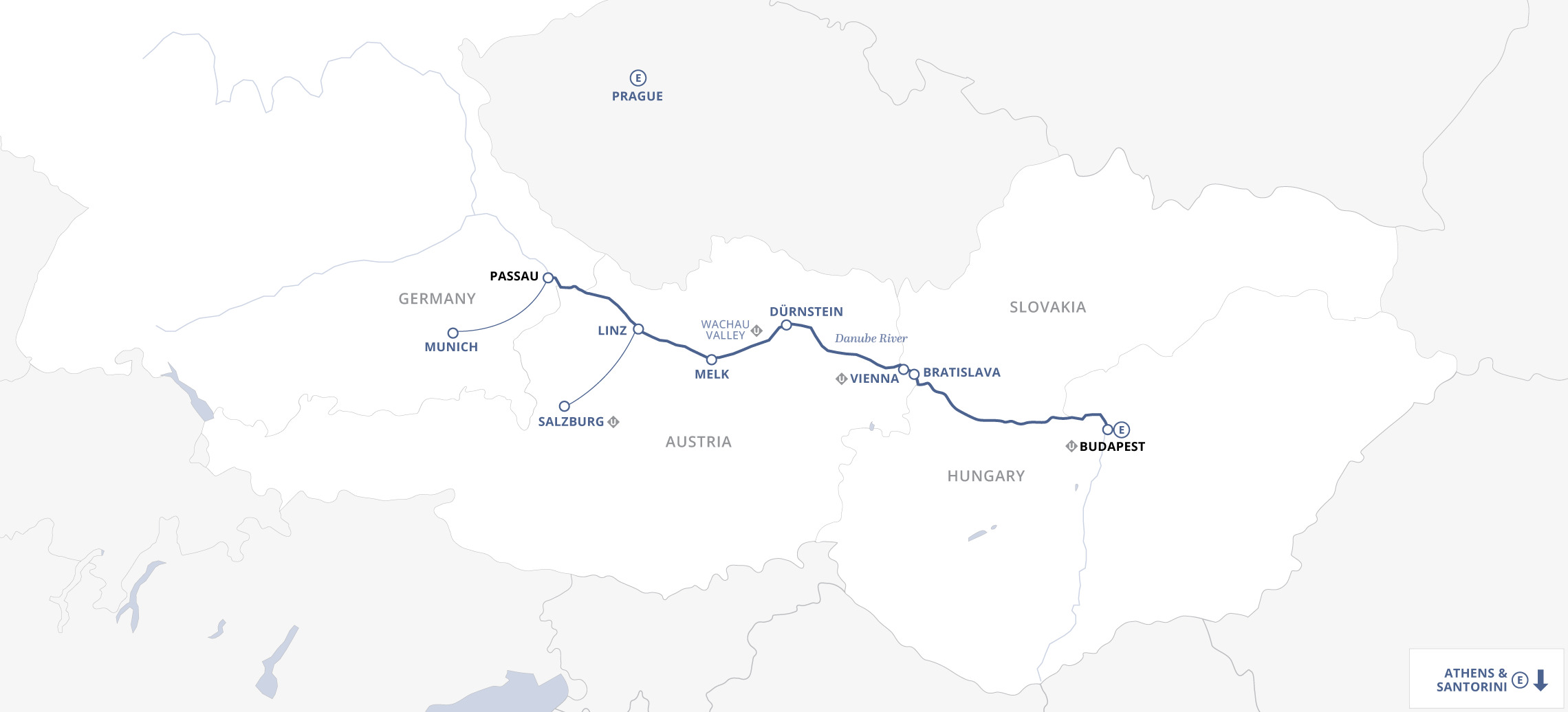
Day 1
Budapest (Embark)
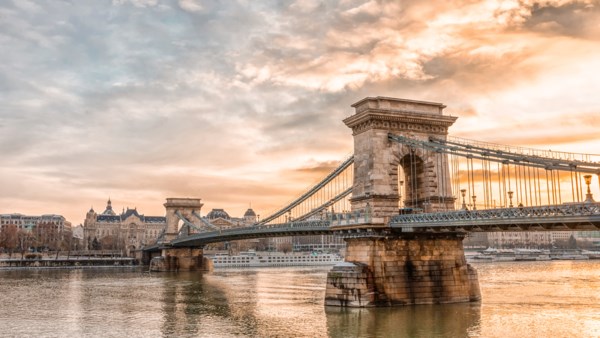
Arrive at Budapest Ferenc Liszt International Airport. If your cruise package includes a group arrival transfer or if you have purchased a private arrival transfer, you will be greeted by a Uniworld representative and transferred to the ship.
Day 2
Budapest
Budapest is an enchanting city that presents a vibrant mix of medieval and modern.
In the evening, a special Captain’s Welcome Reception and Dinner will be prepared for you.
Hungary has been home to a great number of accomplished musicians, including the famous Franz Liszt, who established a university for music in Budapest in 1875. To this day, the Franz Liszt Academy is still a world-famous conservatory, with degree programs in classical instruments, singing,...
Hungary has been home to a great number of accomplished musicians, including the famous Franz Liszt, who established a university for music in Budapest in 1875. To this day, the Franz Liszt Academy is still a world-famous conservatory, with degree programs in classical instruments, singing, conducting, and composing. Take a guided tour of the academy today, culminating in an orchestra performance by some of the current students. Next, we’ll embark on a panoramic drive through the city, with stops including Gellert Hill and the Philosopher’s Garden.
Today your guide will show you how to snack around Budapest like a local, starting with a tram ride to the House of Parliament. Hop off the tram and take a short walk to your first treat: a coffee break at the First Strudel House of Pest. Energized by your cup of coffee, you’ll continue your...
Today your guide will show you how to snack around Budapest like a local, starting with a tram ride to the House of Parliament. Hop off the tram and take a short walk to your first treat: a coffee break at the First Strudel House of Pest. Energized by your cup of coffee, you’ll continue your walk down to St. Stephen’s Basilica—a handsome Neo-Classical building that is one of Budapest’s most significant cultural sites.
From there, we’ll head to the Great Market Hall to sample some traditional Hungarian fare, such as salami, sausages, and cheese, while your local expert explains the intricacies of Hungarian cuisine.
Day 3
Bratislava, Vienna

Your ship sets sail from Bratislava later this morning and heads for Vienna today. You may relax onboard all day, perhaps enjoying a drink on the Sun Deck and taking in the scenery as the ship wends its way along the Danube Bend. When you arrive in Vienna, you’ll cap off your day with a private concert of Mozart and Strauss at a stunning Viennese palace.
Vienna is linked inextricably with music. The list of great composers who lived and worked here is as long as it is glorious. Enjoy an evening of compositions by some of the most famous names on this list, including Wolfgang Amadeus Mozart and Johann Strauss. In one of Vienna’s historic...
Vienna is linked inextricably with music. The list of great composers who lived and worked here is as long as it is glorious. Enjoy an evening of compositions by some of the most famous names on this list, including Wolfgang Amadeus Mozart and Johann Strauss. In one of Vienna’s historic halls, world-class professionals of modern-day Vienna, including singers, will enchant you with their music.
Walk through the loveliest part of Bratislava with your local guide. Starting on the Danube promenade, you’ll cross the former Coronation Square, pass the Slovak National Theater and St. Martin’s Cathedral. This Gothic church was built into the medieval city’s fortifications, and...
Walk through the loveliest part of Bratislava with your local guide. Starting on the Danube promenade, you’ll cross the former Coronation Square, pass the Slovak National Theater and St. Martin’s Cathedral. This Gothic church was built into the medieval city’s fortifications, and 19 Habsburg rulers were crowned inside it, including Empress Maria Theresa. That’s because Bratislava, then known as Pressburg, became the capital of the Kingdom of Hungary after the Ottomans conquered Budapest in 1536, a status it retained until the middle of the 19th-century.
Close to the cathedral you’ll find Michael’s Gate, the last remaining portal of the medieval wall—and your entryway into Bratislava’s Old Town, which blends Gothic, baroque, and art deco structures with some less graceful reminders of the Communist era. The stately 18th-century Primatial Palace, in the center of Old Town, was the site where the Pressburg peace treaty was signed in 1805, in which Austria ceded a great deal of territory to Napoleon. Another 18th-century palace, Grassalkovich, is now the president of Slovakia’s official residence.
Take some time after the tour to browse through the attractive shops in the lovely art deco buildings that line the squares; you can find a wide selection of traditional folk items at the ÚĽUV (Slovak Folk Culture) shop. And you’ll definitely want to sample some of the local delicacies.
This brilliantly white, enormous square building takes over the skyline of Bratislava, and from its grounds you’ll find incredible views of the city below.
After your hike to the castle, you’ll stroll through the most beautiful part of Bratislava with the local guide. You will be...
This brilliantly white, enormous square building takes over the skyline of Bratislava, and from its grounds you’ll find incredible views of the city below.
After your hike to the castle, you’ll stroll through the most beautiful part of Bratislava with the local guide. You will be introduced to the Capital of Slovakia, seeing sites like the Presidential Palace and the unique bridge colloquially known as UFO Bridge (you’ll understand when you see it).
Passing through the historic Old Town, we’ll see the charming House of the Good Shepherd, the pastel tower of the Old Town Hall, and statues like Čumil, the sewage worker leaning out of a manhole in the street to smile at passersby.
Take an authentic look into Communist-era Bratislava as you follow a local guide through the city. As you go, listen to real stories about life in the Czechoslovak Socialist Republic: how some locals escaped past the iron curtain, the Prague Spring of 1968, the Velvet Revolution, and more....
Take an authentic look into Communist-era Bratislava as you follow a local guide through the city. As you go, listen to real stories about life in the Czechoslovak Socialist Republic: how some locals escaped past the iron curtain, the Prague Spring of 1968, the Velvet Revolution, and more. Following your tour, you’ll sit with a representative of a local NGO known as Post Bellum. Post Bellum works to preserve history by documenting first-hand accounts of life during World War II and Communism, interviewing everyone they can find—from resistance members to ex-KGB agents.
This MAKE TRAVEL MATTER® Experience supports Global Goal 4: Quality Education; and Global Goal 16: Peace, Justice, and Strong Institutions.
Our MAKE TRAVEL MATTER® Experiences support sustainable tourism, offering our guests opportunities to directly impact the communities we explore in a positive way.

MAKE TRAVEL MATTER® Experiences
Day 4
Vienna
Vienna is a cultural treasure trove revered for its art and music (and sinfully rich pastries). Experience the “City of Waltzes” with a highlight tour of the city, as well as an expertly led tour of an extraordinary collection of art at the renowned Vienna Art History Museum.
You have leisure time after your tour to explore Vienna on your own. You might wish to visit the Albertina Museum, which houses one million old-master prints and an impressive collection of works by 19th- and 20th-century painters, ranging from Renoir to Rothko.
If you’d like to get a little exercise and see a completely different side of Vienna, borrow a bike from the ship and explore Danube Island and Prater Park. (For a wonderful view of the region, ride the Ferris wheel in Prater Park.)
The Habsburgs assembled an astonishing collection of artistic treasures over the centuries, which formed the basis for the works now on display at the Vienna Art History Museum (Kunsthistorisches). The doors open early especially for you as you join an art historian for a tour of some of the...
The Habsburgs assembled an astonishing collection of artistic treasures over the centuries, which formed the basis for the works now on display at the Vienna Art History Museum (Kunsthistorisches). The doors open early especially for you as you join an art historian for a tour of some of the masterpieces gathered here: View a unique group of works by Pieter Bruegel the Elder, Vermeer’s Allegory of Painting, Raphael’s Madonna in the Meadow, and portraits by Rembrandt, Velazquez, Rubens, Titian, Tintoretto, and Van Eyck, among others, in the Picture Gallery. Then move onto the Kunstkammer galleries, where you can see Benvenuto Cellini’s legendary salt cellar (the only gold sculpture he created that has survived to the present day) and hear its remarkable story. Your tour ends in the magnificent Cupola Hall, perhaps the architectural highlight of the splendid building.
Ring Street, the great horseshoe-shaped boulevard lined with many of the city’s major landmarks—Parliament, City Hall, the Vienna State Opera, glorious palaces, and museums—is a mere 150 years old, practically an infant for a city of Vienna’s age. It replaced the walls and...
Ring Street, the great horseshoe-shaped boulevard lined with many of the city’s major landmarks—Parliament, City Hall, the Vienna State Opera, glorious palaces, and museums—is a mere 150 years old, practically an infant for a city of Vienna’s age. It replaced the walls and fortifications that had protected the city for centuries. Its construction was a testament to confidence, forward-thinking, and grand urban planning, and it resulted in a 50-year building spree. You’ll pass most of these opulent landmarks on your way to the older section of the city, the area the walls once enclosed.
Later, you’ll walk along Kärntner Street, the celebrated pedestrian boulevard that links the State Opera with St. Stephen’s Cathedral, past the elegant shops on the Graben and the Kohlmarkt. The neighborhood offers a lively combination of historic architecture, street performances, shoppers’ delights, and true Viennese atmosphere.
Day 5
Dürnstein, Melk

Dürnstein is one of our favorite towns along the Danube, a lovely place to wander cobblestone lanes, browse quaint shops, and maybe hike up to a ruined castle (with an intriguing tale all its own). You can also opt for a tasting or learn all about the world’s costliest spice from the Wachau Valley’s only saffron grower. Later, visit the 900-year-old Melk Abbey and its extraordinary baroque-style library. You have two ports of call in the incredibly scenic valley, Dürnstein and Melk, and an assortment of delightful ways to explore this lovely region.
There’s no better way to conclude your visit to the Wachau Valley than with a special tasting of organic wines at Nikolaihof, perhaps the oldest winery in Austria. The location itself is fascinating: One may encounter remnants of the first buildings on the site—an ancient Roman...
There’s no better way to conclude your visit to the Wachau Valley than with a special tasting of organic wines at Nikolaihof, perhaps the oldest winery in Austria. The location itself is fascinating: One may encounter remnants of the first buildings on the site—an ancient Roman fort—and taste wines in a deconsecrated 15th-century chapel. Owned by the Saahs family, Nikolaihof is both oldest winery in Austria and the country’s oldest inhabited house, producing some of the world’s best Riesling and Vetliner varietals; in fact, the 1995 Riesling Vinothek, bottled in 2012, actually scored 100 points in The Wine Advocate, the first Austrian wine ever to rank that highly. It is also one of the first wineries in the world to produce biodynamically certified wines. No herbicides, fertilizers, pesticides, or synthetic sprays are used in the vineyards. The grapes are harvested by hand, fermented without artificial yeast, and stored in Austrian oak casks for up to 20 years. Furthering their environmentally-friendly mission, Nikolaihof even produces a cosmetics line out of the waste product from the wine production. The antioxidant-rich skincare products are the world’s first biodynamically certified grape cosmetics.
After your visit, discover Dürnstein on a stroll through town before returning to the ship. Considering its diminutive size, the village of Dürnstein offers much to explore. The famous blue baroque tower of the abbey church is doubtless its best-known landmark, but the ruined castle above the town provides its most romantic tale. There Richard the Lionheart was imprisoned until he was found by his faithful bard, Blondel, and ransom could be raised—or so the legend goes. Walk along the town’s narrow streets, past 16th-, 17th-, and 18th-century houses; it’s an up-close look at over 300 years of architecture.
This MAKE TRAVEL MATTER® Experience supports Global Goal 12: Responsible Consumption and Production.
Our MAKE TRAVEL MATTER® Experiences support sustainable tourism, offering our guests opportunities to directly impact the communities we explore in a positive way.

MAKE TRAVEL MATTER® Experiences
Educate your taste buds with flavorful delicacies as you taste red-wine-and-saffron chocolate and saffron-seasoned jams, vinegars, and honey. Crusaders planted the first saffron crocuses in the Wachau Valley at the end of the 12th century, making saffron a valued crop for 700 years—but it...
Educate your taste buds with flavorful delicacies as you taste red-wine-and-saffron chocolate and saffron-seasoned jams, vinegars, and honey. Crusaders planted the first saffron crocuses in the Wachau Valley at the end of the 12th century, making saffron a valued crop for 700 years—but it disappeared from the terraced hillsides early in the 20th century. It wasn’t until 2007 that an ecologist found mention of it in an 18th-century document at Melk Abbey’s celebrated library. Bernard Kaar, who spent years researching the history of saffron and still more years cultivating the world’s only biodynamically certified saffron, is one of the Wachau’s most important producers. Meet Bernard and his wife, Alexandra, for a fascinating introduction to saffron—the plant, the spice, its cultural significance, and their farm’s uniquely sustainable methods of producing it.
Later walk along the town’s narrow streets, past 16th-, 17th- and 18th-century houses; it’s an up-close look at over 300 years of architecture. Considering its diminutive size, the village of Dürnstein offers much to explore. The famous blue baroque tower of the abbey church is doubtless its best-known landmark, but the ruined castle above the town provides its most romantic tale. There Richard the Lionheart was imprisoned until he was found by his faithful bard, Blondel, and ransom could be raised—or so the legend goes.
This MAKE TRAVEL MATTER® Experience supports Global Goal 12: Responsible Consumption and Production.
Our MAKE TRAVEL MATTER® Experiences support sustainable tourism, offering our guests opportunities to directly impact the communities we explore in a positive way.

MAKE TRAVEL MATTER® Experiences
The Babenbergs, a great medieval ducal family that controlled a wide swath of Austria before yielding to the Habsburgs, were the first to erect a castle on the hill above Melk, which they subsequently gave to Benedictine monks. These monks, some 900 years ago, turned it into a fortified...
The Babenbergs, a great medieval ducal family that controlled a wide swath of Austria before yielding to the Habsburgs, were the first to erect a castle on the hill above Melk, which they subsequently gave to Benedictine monks. These monks, some 900 years ago, turned it into a fortified abbey—and the greatest center of learning in Central Europe. Their library was celebrated far and wide (and still is; Umberto Eco paid tribute to it in his best-selling novel The Name of the Rose). Medieval monks there created more than 1,200 manuscripts, sometimes spending an entire lifetime hand-lettering a single volume. Today the library contains some 100,000 volumes, among them more than 80,000 works printed before 1800. This beautiful complex, completely redone in the early 18th century, is a wonderful example of baroque art and architecture, and the views from its terrace are spectacular. As you walk through the abbey’s Marble Hall with your guide, look up at the ceiling fresco painted by Paul Troger: Those classical gods and goddesses represent Holy Roman Emperor Charles VI, allegorically bringing his people from dark to light and demonstrating the link he claimed to the original Roman Empire.
After your tour of the abbey, you’ll have time to explore Melk on your own, or you can take the motorcoach back to the ship.
You've likely seen bicyclists pedaling beside the river during your cruise. The Danube bike path is Europe's most popular bike route; it follows the river between Regensburg and Passau. Take to the path today and wheel along a particularly scenic 20-mile stretch between Dürnstein to Melk that...
You've likely seen bicyclists pedaling beside the river during your cruise. The Danube bike path is Europe's most popular bike route; it follows the river between Regensburg and Passau. Take to the path today and wheel along a particularly scenic 20-mile stretch between Dürnstein to Melk that affords some of the most impressive views of the famed Wachau Valley. The flat riverbanks make for easy biking, freeing you to fully enjoy the beauty of the surrounding vineyards, wooded mountains, and charming villages.
Day 6
Linz (Salzburg)

Mozart’s birthplace of Salzburg is nestled in a glorious alpine setting that sparkles like a winter wonderland. Linz may be best known for its famous Linzer torte, but it’s also a hotbed for the arts. See the sights with a local expert and visit a family at their farm in the countryside. Austria’s third-largest city, Linz boasts a long history of trading and textile manufacturing, but these days it is perhaps best known for its electronic arts and annual festival.
Not only is Salzburg famously the shooting location for the 1965 film, The Sound of Music, but it is also the birthplace of Wolfgang Amadeus Mozart. Today, we’ll dive into the city’s deep musical heritage with a walking tour through its picturesque squares and baroque architecture....
Not only is Salzburg famously the shooting location for the 1965 film, The Sound of Music, but it is also the birthplace of Wolfgang Amadeus Mozart. Today, we’ll dive into the city’s deep musical heritage with a walking tour through its picturesque squares and baroque architecture. Visit Maria’s church in the nearby town of Mondsee, as well as the Viennese gardens around which she and the children sang “Do Re Mi.” See the house where Mozart was born and take a lift up the Mönschberg mountain for an excellent view of the city.
Get to know Linz on foot with a local expert who will take you by all the major sites in town, from Mozart’s apartment to the old Jesuit Cathedral. You’ll stop for a bite at Konditorei Jindrak, home of the Original Linzer Torte. Enjoy a cup of coffee alongside this thin, buttery pastry...
Get to know Linz on foot with a local expert who will take you by all the major sites in town, from Mozart’s apartment to the old Jesuit Cathedral. You’ll stop for a bite at Konditorei Jindrak, home of the Original Linzer Torte. Enjoy a cup of coffee alongside this thin, buttery pastry made with ground nuts, filled with fruit preserves and topped with a lattice crust.
Next, the group will split in two, each half heading out to a countryside cider farm. There, you’ll be treated to a lunch of local specialties and house-made cider—an excellent way to immerse yourself in rural Austrian life and scenery, while also supporting local farmers. Both farms are entirely organic and give special care to the quality of the ingredients they produce, from the careful cultivation of their bountiful orchards to the livestock they keep in large grazing pastures. This type of farming produces less waste and—as you’ll see during your lunch there—better food.
This MAKE TRAVEL MATTER® Experience supports Global Goal 12: Responsible Consumption and Production.
Our MAKE TRAVEL MATTER® Experiences support sustainable tourism, offering our guests opportunities to directly impact the communities we explore in a positive way.

MAKE TRAVEL MATTER® Experiences
Day 7
Passau

Passau is a crossroads in more ways than one, as three rivers meet here and three nations nearly do, making for a fascinating cultural mosaic. Get to know the town and its main claim to fame—Europe’s largest pipe organ—or “Let’s Go” with an invigorating riverside hike.
In the evening, a special Captain’s Farewell Reception and Dinner will be prepared for you.
Passau is built upon the meeting point of three rivers: the Danube, the Inn, and the Ilz. Sprawling across the riverbanks, the city has a particularly charming setting, which you’ll get to appreciate on a walking tour of its top sites.
After walking around Passau, we’ll drive to a...
Passau is built upon the meeting point of three rivers: the Danube, the Inn, and the Ilz. Sprawling across the riverbanks, the city has a particularly charming setting, which you’ll get to appreciate on a walking tour of its top sites.
After walking around Passau, we’ll drive to a beautiful natural habitat on the Ilz, where you can take a short walk and relax in the scenic environment before reboarding the coach for a trip up to the Kloster Mariahilf to see the three rivers from above.
Put on your hiking boots, grab a windbreaker and a bottle of water, and head out with a local hiking guide and nature expert to explore the banks of the Ilz River. This small but rushing tributary of the Danube originates deep in the Bavarian Forest, near the Czech border, and is just 40 miles (65...
Put on your hiking boots, grab a windbreaker and a bottle of water, and head out with a local hiking guide and nature expert to explore the banks of the Ilz River. This small but rushing tributary of the Danube originates deep in the Bavarian Forest, near the Czech border, and is just 40 miles (65 kilometers) long. Its upper stretch is a premier whitewater rafting location, but you’ll be hiking along the lower, serene end of the river. Your starting point is Hals-Hochstein, where you’ll pick up a nature trail that follows a curve of the river and then climbs a steep hill, where you have a great view of the river and woodlands. You will cross the river repeatedly, once by way of a dam and again toward the end of your four-mile (6.5-kilometer) hike, as you loop back to the Hals.
Day 8
Passau (Disembark)
Disembark the ship. If your cruise package includes a group departure transfer or if you purchased a private departure transfer, you will be transferred to Munich Airport for your flight home.
Day 1
Passau (Embark)

Arrive at Munich Airport. If your cruise package includes a group arrival transfer or if you have purchased a private arrival transfer, you will be greeted by a Uniworld representative and transferred to the ship.
Day 2
Passau
Passau is a crossroads in more ways than one, as three rivers meet here and three nations nearly do, making for a fascinating cultural mosaic. Get to know the town and its main claim to fame—Europe’s largest pipe organ—or “Let’s Go” with an invigorating riverside hike.
In the evening, a special Captain’s Welcome Reception and Dinner will be prepared for you.
Passau is built upon the meeting point of three rivers: the Danube, the Inn, and the Ilz. Sprawling across the riverbanks, the city has a particularly charming setting, which you’ll get to appreciate on a walking tour of its top sites.
After walking around Passau, we’ll drive to a...
Passau is built upon the meeting point of three rivers: the Danube, the Inn, and the Ilz. Sprawling across the riverbanks, the city has a particularly charming setting, which you’ll get to appreciate on a walking tour of its top sites.
After walking around Passau, we’ll drive to a beautiful natural habitat on the Ilz, where you can take a short walk and relax in the scenic environment before reboarding the coach for a trip up to the Kloster Mariahilf to see the three rivers from above.
Put on your hiking boots, grab a windbreaker and a bottle of water, and head out with a local hiking guide and nature expert to explore the banks of the Ilz River. This small but rushing tributary of the Danube originates deep in the Bavarian Forest, near the Czech border, and is just 40 miles (65...
Put on your hiking boots, grab a windbreaker and a bottle of water, and head out with a local hiking guide and nature expert to explore the banks of the Ilz River. This small but rushing tributary of the Danube originates deep in the Bavarian Forest, near the Czech border, and is just 40 miles (65 kilometers) long. Its upper stretch is a premier whitewater rafting location, but you’ll be hiking along the lower, serene end of the river. Your starting point is Hals-Hochstein, where you’ll pick up a nature trail that follows a curve of the river and then climbs a steep hill, where you have a great view of the river and woodlands. You will cross the river repeatedly, once by way of a dam and again toward the end of your four-mile (6.5-kilometer) hike, as you loop back to the Hals.
Day 3
Linz (Salzburg)

Mozart’s birthplace of Salzburg is nestled in a glorious alpine setting that sparkles like a winter wonderland. Linz may be best known for its famous Linzer torte, but it’s also a hotbed for the arts. See the sights with a local expert and visit a family at their farm in the countryside. Austria’s third-largest city, Linz boasts a long history of trading and textile manufacturing, but these days it is perhaps best known for its electronic arts and annual festival.
Not only is Salzburg famously the shooting location for the 1965 film, The Sound of Music, but it is also the birthplace of Wolfgang Amadeus Mozart. Today, we’ll dive into the city’s deep musical heritage with a walking tour through its picturesque squares and baroque architecture....
Not only is Salzburg famously the shooting location for the 1965 film, The Sound of Music, but it is also the birthplace of Wolfgang Amadeus Mozart. Today, we’ll dive into the city’s deep musical heritage with a walking tour through its picturesque squares and baroque architecture. Visit Maria’s church in the nearby town of Mondsee, as well as the Viennese gardens around which she and the children sang “Do Re Mi.” See the house where Mozart was born and take a lift up the Mönschberg mountain for an excellent view of the city.
Get to know Linz on foot with a local expert who will take you by all the major sites in town, from Mozart’s apartment to the old Jesuit Cathedral. You’ll stop for a bite at Konditorei Jindrak, home of the Original Linzer Torte. Enjoy a cup of coffee alongside this thin, buttery pastry...
Get to know Linz on foot with a local expert who will take you by all the major sites in town, from Mozart’s apartment to the old Jesuit Cathedral. You’ll stop for a bite at Konditorei Jindrak, home of the Original Linzer Torte. Enjoy a cup of coffee alongside this thin, buttery pastry made with ground nuts, filled with fruit preserves and topped with a lattice crust.
Next, the group will split in two, each half heading out to a countryside cider farm. There, you’ll be treated to a lunch of local specialties and house-made cider—an excellent way to immerse yourself in rural Austrian life and scenery, while also supporting local farmers. Both farms are entirely organic and give special care to the quality of the ingredients they produce, from the careful cultivation of their bountiful orchards to the livestock they keep in large grazing pastures. This type of farming produces less waste and—as you’ll see during your lunch there—better food.
This MAKE TRAVEL MATTER® Experience supports Global Goal 12: Responsible Consumption and Production.
Our MAKE TRAVEL MATTER® Experiences support sustainable tourism, offering our guests opportunities to directly impact the communities we explore in a positive way.

MAKE TRAVEL MATTER® Experiences
Day 4
Melk, Dürnstein

This morning, visit the 900-year-old Melk Abbey and its extraordinary baroque-style library.
Later, you will head to Dürnstein, one of our favorite towns along the Danube, a lovely place to wander cobblestone lanes, browse quaint shops, and maybe hike up to a ruined castle (with an intriguing tale all its own). You can also opt for a tasting or learn all about the world’s costliest spice from the Wachau Valley’s only saffron grower. You have two ports of call in the incredibly scenic valley, Dürnstein and Melk, and an assortment of delightful ways to explore this lovely region.
The Babenbergs, a great medieval ducal family that controlled a wide swath of Austria before yielding to the Habsburgs, were the first to erect a castle on the hill above Melk, which they subsequently gave to Benedictine monks. These monks, some 900 years ago, turned it into a fortified...
The Babenbergs, a great medieval ducal family that controlled a wide swath of Austria before yielding to the Habsburgs, were the first to erect a castle on the hill above Melk, which they subsequently gave to Benedictine monks. These monks, some 900 years ago, turned it into a fortified abbey—and the greatest center of learning in Central Europe. Their library was celebrated far and wide (and still is; Umberto Eco paid tribute to it in his best-selling novel The Name of the Rose). Medieval monks there created more than 1,200 manuscripts, sometimes spending an entire lifetime hand-lettering a single volume. Today the library contains some 100,000 volumes, among them more than 80,000 works printed before 1800. This beautiful complex, completely redone in the early 18th century, is a wonderful example of baroque art and architecture, and the views from its terrace are spectacular. As you walk through the abbey’s Marble Hall with your guide, look up at the ceiling fresco painted by Paul Troger: Those classical gods and goddesses represent Holy Roman Emperor Charles VI, allegorically bringing his people from dark to light and demonstrating the link he claimed to the original Roman Empire.
After your tour of the abbey, you’ll have time to explore Melk on your own, or you can take the motorcoach back to the ship.
You've likely seen bicyclists pedaling beside the river during your cruise. The Danube bike path is Europe's most popular bike route; it follows the river between Regensburg and Passau. Take to the path today and wheel along a particularly scenic 20-mile stretch between Dürnstein to Melk that...
You've likely seen bicyclists pedaling beside the river during your cruise. The Danube bike path is Europe's most popular bike route; it follows the river between Regensburg and Passau. Take to the path today and wheel along a particularly scenic 20-mile stretch between Dürnstein to Melk that affords some of the most impressive views of the famed Wachau Valley. The flat riverbanks make for easy biking, freeing you to fully enjoy the beauty of the surrounding vineyards, wooded mountains, and charming villages.
There’s no better way to conclude your visit to the Wachau Valley than with a special tasting of organic wines at Nikolaihof, perhaps the oldest winery in Austria. The location itself is fascinating: One may encounter remnants of the first buildings on the site—an ancient Roman...
There’s no better way to conclude your visit to the Wachau Valley than with a special tasting of organic wines at Nikolaihof, perhaps the oldest winery in Austria. The location itself is fascinating: One may encounter remnants of the first buildings on the site—an ancient Roman fort—and taste wines in a deconsecrated 15th-century chapel. Owned by the Saahs family, Nikolaihof is both oldest winery in Austria and the country’s oldest inhabited house, producing some of the world’s best Riesling and Vetliner varietals; in fact, the 1995 Riesling Vinothek, bottled in 2012, actually scored 100 points in The Wine Advocate, the first Austrian wine ever to rank that highly. It is also one of the first wineries in the world to produce biodynamically certified wines. No herbicides, fertilizers, pesticides, or synthetic sprays are used in the vineyards. The grapes are harvested by hand, fermented without artificial yeast, and stored in Austrian oak casks for up to 20 years. Furthering their environmentally-friendly mission, Nikolaihof even produces a cosmetics line out of the waste product from the wine production. The antioxidant-rich skincare products are the world’s first biodynamically certified grape cosmetics.
After your visit, discover Dürnstein on a stroll through town before returning to the ship. Considering its diminutive size, the village of Dürnstein offers much to explore. The famous blue baroque tower of the abbey church is doubtless its best-known landmark, but the ruined castle above the town provides its most romantic tale. There Richard the Lionheart was imprisoned until he was found by his faithful bard, Blondel, and ransom could be raised—or so the legend goes. Walk along the town’s narrow streets, past 16th-, 17th-, and 18th-century houses; it’s an up-close look at over 300 years of architecture.
This MAKE TRAVEL MATTER® Experience supports Global Goal 12: Responsible Consumption and Production.
Our MAKE TRAVEL MATTER® Experiences support sustainable tourism, offering our guests opportunities to directly impact the communities we explore in a positive way.

MAKE TRAVEL MATTER® Experiences
Educate your taste buds with flavorful delicacies as you taste red-wine-and-saffron chocolate and saffron-seasoned jams, vinegars, and honey. Crusaders planted the first saffron crocuses in the Wachau Valley at the end of the 12th century, making saffron a valued crop for 700 years—but it...
Educate your taste buds with flavorful delicacies as you taste red-wine-and-saffron chocolate and saffron-seasoned jams, vinegars, and honey. Crusaders planted the first saffron crocuses in the Wachau Valley at the end of the 12th century, making saffron a valued crop for 700 years—but it disappeared from the terraced hillsides early in the 20th century. It wasn’t until 2007 that an ecologist found mention of it in an 18th-century document at Melk Abbey’s celebrated library. Bernard Kaar, who spent years researching the history of saffron and still more years cultivating the world’s only biodynamically certified saffron, is one of the Wachau’s most important producers. Meet Bernard and his wife, Alexandra, for a fascinating introduction to saffron—the plant, the spice, its cultural significance, and their farm’s uniquely sustainable methods of producing it.
Later walk along the town’s narrow streets, past 16th-, 17th-, and 18th-century houses; it’s an up-close look at over 300 years of architecture. Considering its diminutive size, the village of Dürnstein offers much to explore. The famous blue baroque tower of the abbey church is doubtless its best-known landmark, but the ruined castle above the town provides its most romantic tale. There Richard the Lionheart was imprisoned until he was found by his faithful bard, Blondel, and ransom could be raised—or so the legend goes.
This MAKE TRAVEL MATTER® Experience supports Global Goal 12: Responsible Consumption and Production.
Our MAKE TRAVEL MATTER® Experiences support sustainable tourism, offering our guests opportunities to directly impact the communities we explore in a positive way.

MAKE TRAVEL MATTER® Experiences
Day 5
Vienna

Vienna is a cultural treasure trove revered for its art and music (and sinfully rich pastries). Experience the “City of Waltzes” with a highlight tour of the city, as well as an expertly led tour of an extraordinary collection of art at the renowned Vienna Art History Museum.
You have leisure time after your tour to explore Vienna on your own. You might wish to visit the Albertina Museum, which houses one million old-master prints and an impressive collection of works by 19th- and 20th-century painters, ranging from Renoir to Rothko.
If you’d like to get a little exercise and see a completely different side of Vienna, borrow a bike from the ship and explore Danube Island and Prater Park. (For a wonderful view of the region, ride the Ferris wheel in Prater Park.)
The Habsburgs assembled an astonishing collection of artistic treasures over the centuries, which formed the basis for the works now on display at the Vienna Art History Museum (Kunsthistorisches). The doors open early especially for you as you join an art historian for a tour of some of the...
The Habsburgs assembled an astonishing collection of artistic treasures over the centuries, which formed the basis for the works now on display at the Vienna Art History Museum (Kunsthistorisches). The doors open early especially for you as you join an art historian for a tour of some of the masterpieces gathered here: View a unique group of works by Pieter Bruegel the Elder, Vermeer’s Allegory of Painting, Raphael’s Madonna in the Meadow, and portraits by Rembrandt, Velazquez, Rubens, Titian, Tintoretto, and Van Eyck, among others, in the Picture Gallery. Then move onto the Kunstkammer galleries, where you can see Benvenuto Cellini’s legendary salt cellar (the only gold sculpture he created that has survived to the present day) and hear its remarkable story. Your tour ends in the magnificent Cupola Hall, perhaps the architectural highlight of the splendid building.
Ring Street, the great horseshoe-shaped boulevard lined with many of the city’s major landmarks—Parliament, City Hall, the Vienna State Opera, glorious palaces, and museums—is a mere 150 years old, practically an infant for a city of Vienna’s age. It replaced the walls and...
Ring Street, the great horseshoe-shaped boulevard lined with many of the city’s major landmarks—Parliament, City Hall, the Vienna State Opera, glorious palaces, and museums—is a mere 150 years old, practically an infant for a city of Vienna’s age. It replaced the walls and fortifications that had protected the city for centuries. Its construction was a testament to confidence, forward-thinking, and grand urban planning, and it resulted in a 50-year building spree. You’ll pass most of these opulent landmarks on your way to the older section of the city, the area the walls once enclosed.
Later, you’ll walk along Kärntner Street, the celebrated pedestrian boulevard that links the State Opera with St. Stephen’s Cathedral, past the elegant shops on the Graben and the Kohlmarkt. The neighborhood offers a lively combination of historic architecture, street performances, shoppers’ delights, and true Viennese atmosphere.
Vienna is linked inextricably with music. The list of great composers who lived and worked here is as long as it is glorious. Enjoy an evening of compositions by some of the most famous names on this list, including Wolfgang Amadeus Mozart and Johann Strauss. In one of Vienna’s historic...
Vienna is linked inextricably with music. The list of great composers who lived and worked here is as long as it is glorious. Enjoy an evening of compositions by some of the most famous names on this list, including Wolfgang Amadeus Mozart and Johann Strauss. In one of Vienna’s historic halls, world-class professionals of modern-day Vienna, including singers, will enchant you with their music.
Day 6
Vienna, Bratislava

Your ship sets sail from Vienna and heads for Bratislava today. You may relax onboard all day, perhaps enjoying a drink on the Sun Deck and taking in the scenery as the ship wends its way along the Austrian Danube toward Bratislava. Although it’s not a large city, Bratislava has played a leading role in the politics and culture of the region for many centuries, and it is well worth a visit.
If you opt for the walking tour today, you may choose to leave the ship by bus in Vienna and start your excursion early. This would give you time for lunch on your own in town, as well as some additional free time to enjoy Bratislava after your tour ends.
Walk through the loveliest part of Bratislava with your local guide. Starting on the Danube promenade, you’ll cross the former Coronation Square, pass the Slovak National Theater and St. Martin’s Cathedral. This Gothic church was built into the medieval city’s fortifications, and...
Walk through the loveliest part of Bratislava with your local guide. Starting on the Danube promenade, you’ll cross the former Coronation Square, pass the Slovak National Theater and St. Martin’s Cathedral. This Gothic church was built into the medieval city’s fortifications, and 19 Habsburg rulers were crowned inside it, including Empress Maria Theresa. That’s because Bratislava, then known as Pressburg, became the capital of the Kingdom of Hungary after the Ottomans conquered Budapest in 1536, a status it retained until the middle of the 19th-century.
Close to the cathedral you’ll find Michael’s Gate, the last remaining portal of the medieval wall—and your entryway into Bratislava’s Old Town, which blends Gothic, baroque, and art deco structures with some less graceful reminders of the Communist era. The stately 18th-century Primatial Palace, in the center of Old Town, was the site where the Pressburg peace treaty was signed in 1805, in which Austria ceded a great deal of territory to Napoleon. Another 18th-century palace, Grassalkovich, is now the president of Slovakia’s official residence.
Take some time after the tour to browse through the attractive shops in the lovely art deco buildings that line the squares; you can find a wide selection of traditional folk items at the ÚĽUV (Slovak Folk Culture) shop. And you’ll definitely want to sample some of the local delicacies.
This brilliantly white, enormous square building takes over the skyline of Bratislava, and from its grounds you’ll find incredible views of the city below.
After your hike to the castle, you’ll stroll through the most beautiful part of Bratislava with the local guide. You will be...
This brilliantly white, enormous square building takes over the skyline of Bratislava, and from its grounds you’ll find incredible views of the city below.
After your hike to the castle, you’ll stroll through the most beautiful part of Bratislava with the local guide. You will be introduced to the Capital of Slovakia, seeing sites like the Presidential Palace and the unique bridge colloquially known as UFO Bridge (you’ll understand when you see it).
Passing through the historic Old Town, we’ll see the charming House of the Good Shepherd, the pastel tower of the Old Town Hall, and statues like Čumil, the sewage worker leaning out of a manhole in the street to smile at passersby.
Day 7
Budapest

Budapest is an enchanting city that presents a vibrant mix of medieval and modern.
In the evening, a special Captain’s Farewell Reception and Dinner will be prepared for you.
Hungary has been home to a great number of accomplished musicians, including the famous Franz Liszt, who established a university for music in Budapest in 1875. To this day, the Franz Liszt Academy is still a world-famous conservatory, with degree programs in classical instruments, singing,...
Hungary has been home to a great number of accomplished musicians, including the famous Franz Liszt, who established a university for music in Budapest in 1875. To this day, the Franz Liszt Academy is still a world-famous conservatory, with degree programs in classical instruments, singing, conducting, and composing. Take a guided tour of the academy today, culminating in an orchestra performance by some of the current students. Next, we’ll embark on a panoramic drive through the city, with stops including Gellert Hill and the Philosopher’s Garden.
Today your guide will show you how to snack around Budapest like a local, starting with a tram ride to the House of Parliament. Hop off the tram and take a short walk to your first treat: a coffee break at the First Strudel House of Pest. Energized by your cup of coffee, you’ll continue your...
Today your guide will show you how to snack around Budapest like a local, starting with a tram ride to the House of Parliament. Hop off the tram and take a short walk to your first treat: a coffee break at the First Strudel House of Pest. Energized by your cup of coffee, you’ll continue your walk down to St. Stephen’s Basilica—a handsome Neo-Classical building that is one of Budapest’s most significant cultural sites.
From there, we’ll head to the Great Market Hall to sample some traditional Hungarian fare, such as salami, sausages, and cheese, while your local expert explains the intricacies of Hungarian cuisine.
Day 8
Budapest (Disembark)
Disembark the ship and transfer to Budapest Ferenc Liszt International Airport for your flight home, or extend your stay in Budapest.
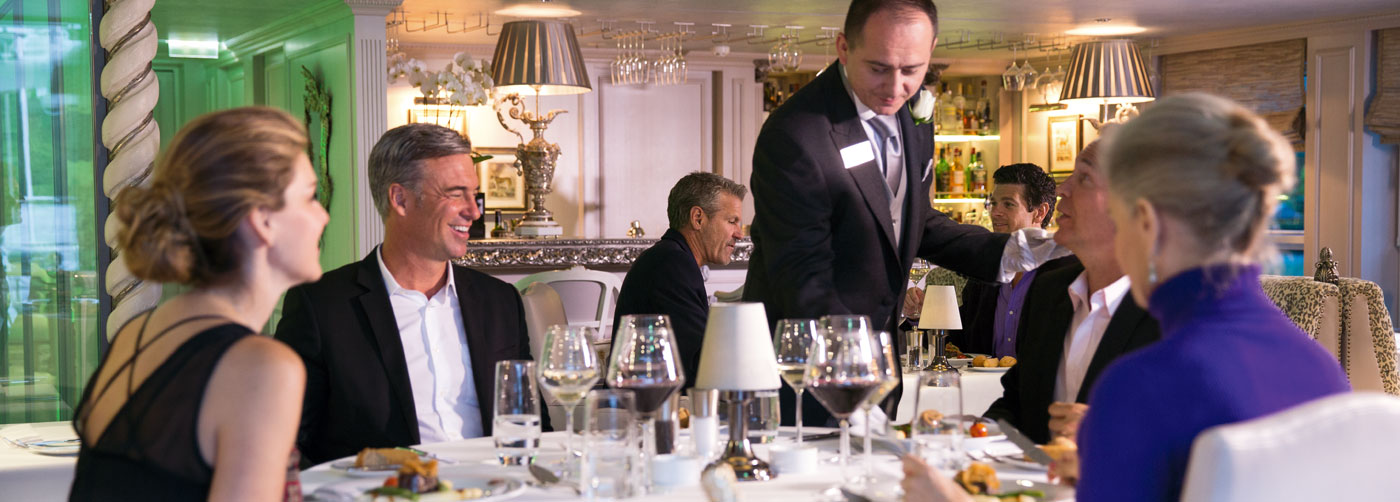
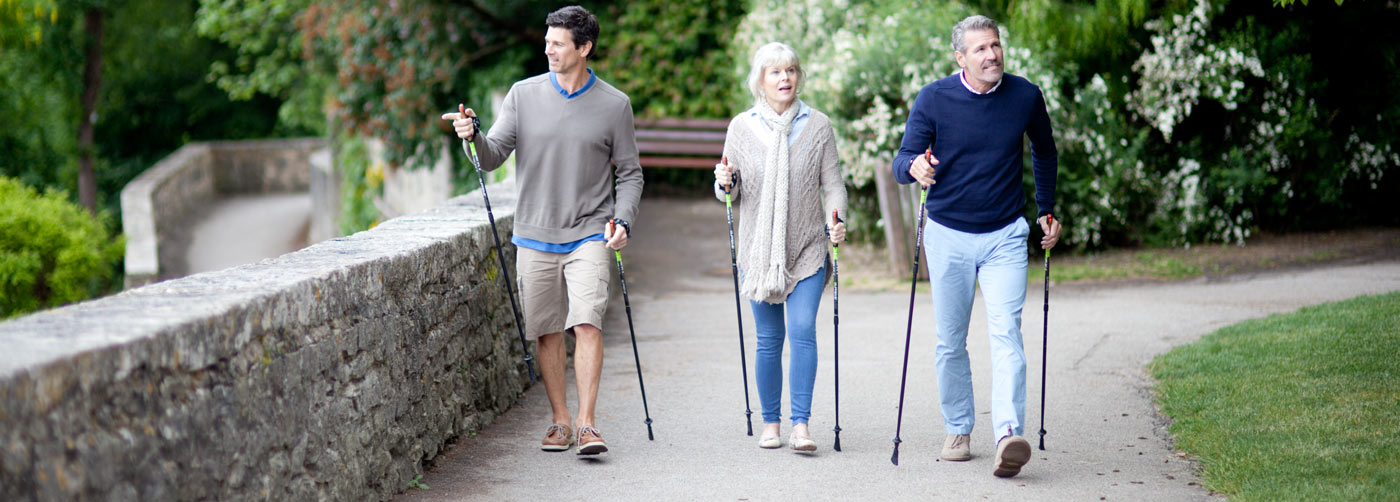
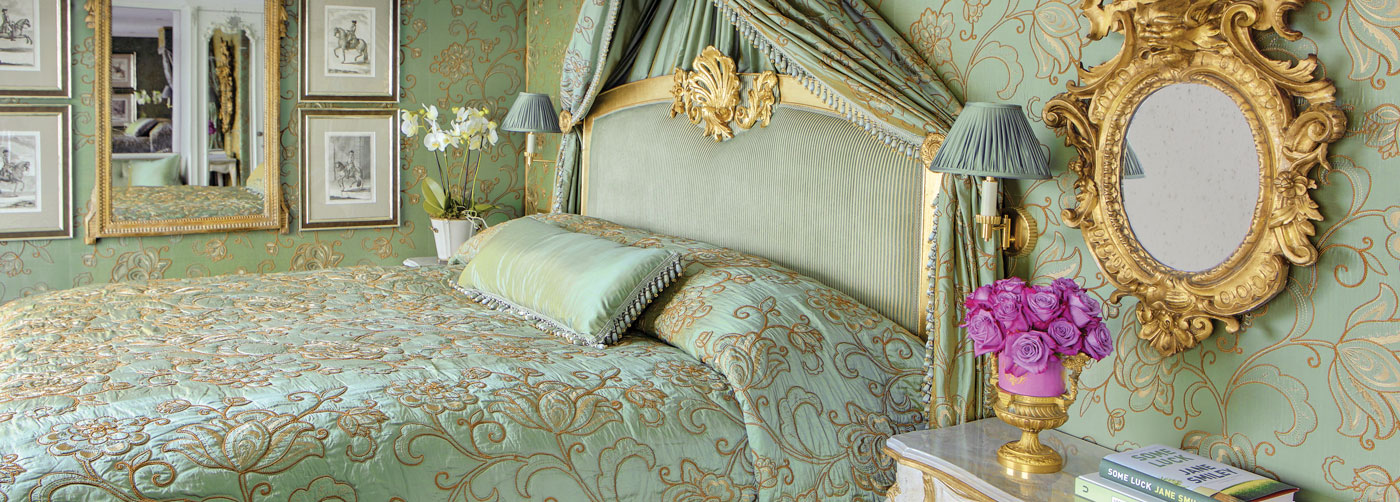
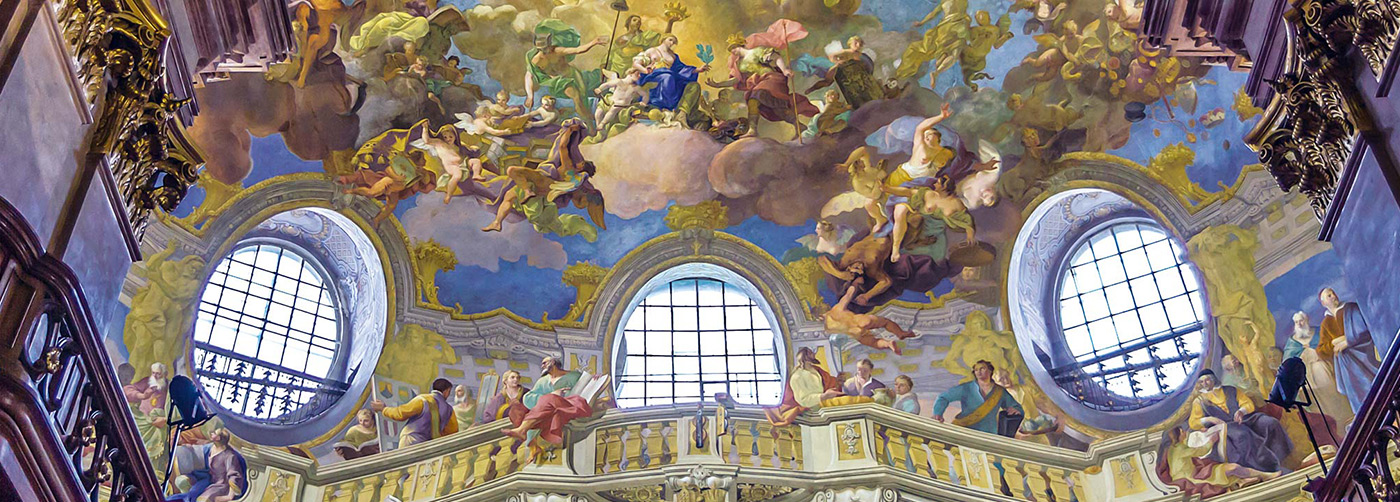
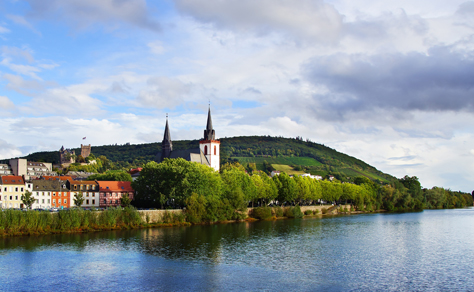
2025 | Find inspiration in the romantic, soul-stirring beauty of the fabled Rhine.
Learn More
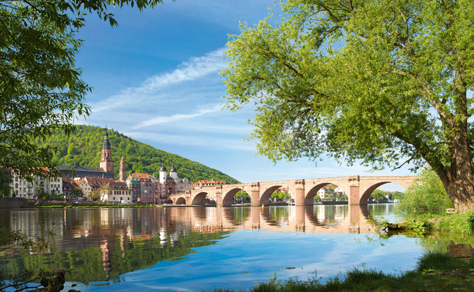
2025 | Indulge your passion for majestic art, architecture, music and history on an all-encompassing journey through four countries along three great rivers.
Learn More
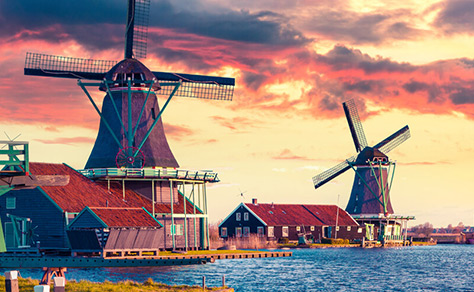
2025 | Explore Europe’s rich history and Jewish heritage on an incredible discovery of the Netherlands, Germany, France and Switzerland.
Learn More